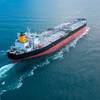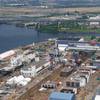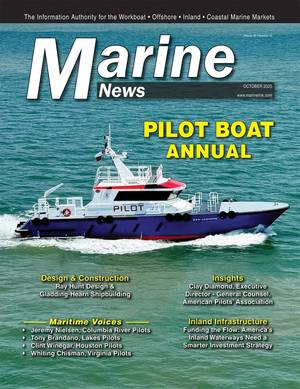AI-Based System Autonomously Suppresses Shipboard Oil Fires
A next-generation fire suppression system capable of autonomously detecting oil fires aboard naval vessels and targeting and extinguishing them has been developed domestically for the first time. The system uses AI to determine the authenticity of a fire, activating only when an actual fire occurs. It concentrates its discharge solely on the fire source, much like a firefighter extinguishing flames.
A research team led by Senior Researcher Hyuk Lee at the AX Convergence Research Center, Virtual Engineering Platform Research Division, Korea Institute of Machinery and Materials (KIMM, President Seog-Hyeon Ryu), under the National Research Council of Science & Technology (NST, Chairman Young-Shik Kim), has developed this system and successfully completed trials on a vessel.
This newly developed initial suppression firefighting system for shipboard oil fires represents an advanced iteration of the research team's autonomous firefighting technology, specifically engineered for the most common oil fires occurring on naval vessels. Its key feature is the ability to autonomously detect oil fires caused by equipment or aircraft leaks in engine rooms, hangars, decks, etc., and accurately target and extinguish the fire source even under complex environmental conditions such as sea waves and ship motion.
Existing shipboard firefighting systems release extinguishing agents throughout the entire affected area upon fire detection. This approach caused unnecessary damage during false alarms and made precise targeting difficult in maritime environments. In contrast, the technology developed by the KIMM research team combines AI-based precision fire detection with reinforcement learning algorithms for maritime condition adaptation, dramatically overcoming these limitations.
The developed fire suppression system consists of fire detection sensors, fire monitors, and an analysis and control unit equipped with AI-based fire authenticity determination and location estimation capabilities. The system maintains a fire detection accuracy of over 98%, with a foam discharge range reaching approximately 24 meters. It has also been verified to operate stably even in sea states of 3 or higher.
The research team conducted systematic performance verification using a large-scale land-based simulation facility (25m×5m×5m) that replicates the actual ship environment. Within the simulation facility, various oil fire conditions and non-fire situations that could be mistaken for fires (lighters, welding, electric heaters, etc.) were reproduced to perform pre-training and accuracy testing of the AI system.
Notably, successful suppression tests were completed for open-area oil fires (maximum 4.5㎡ oil tray) and shielded fires (helicopter-sized shield installed 50cm above a 3.0㎡ oil tray) that could occur from leaks in aircraft carriers, proving the system's capability to respond to all types of oil fires possible on vessels.
Subsequently, the research team conducted real-ship tests aboard the LST-II class amphibious assault ship (ROKS Ilchulbong) and successfully achieved precise targeting of extinguishing water onto a fire source 18m away in actual sea conditions with 1m waves. To accomplish this, they developed and pre-trained a reinforcement learning-based algorithm that recalculates the aiming angle in real-time by reflecting wave and hull motion using only 6-degree-of-freedom acceleration data.
This research was conducted as part of the ‘Civilian-Military Practical Application Linkage Project’ implemented by the Institute of Civil Military Technology Cooperation. Participants included the Korea Institute of Civil Engineering and Building Technology, Chungnam National University, Super Century Co., Ltd., and the Korea Military Academy.













